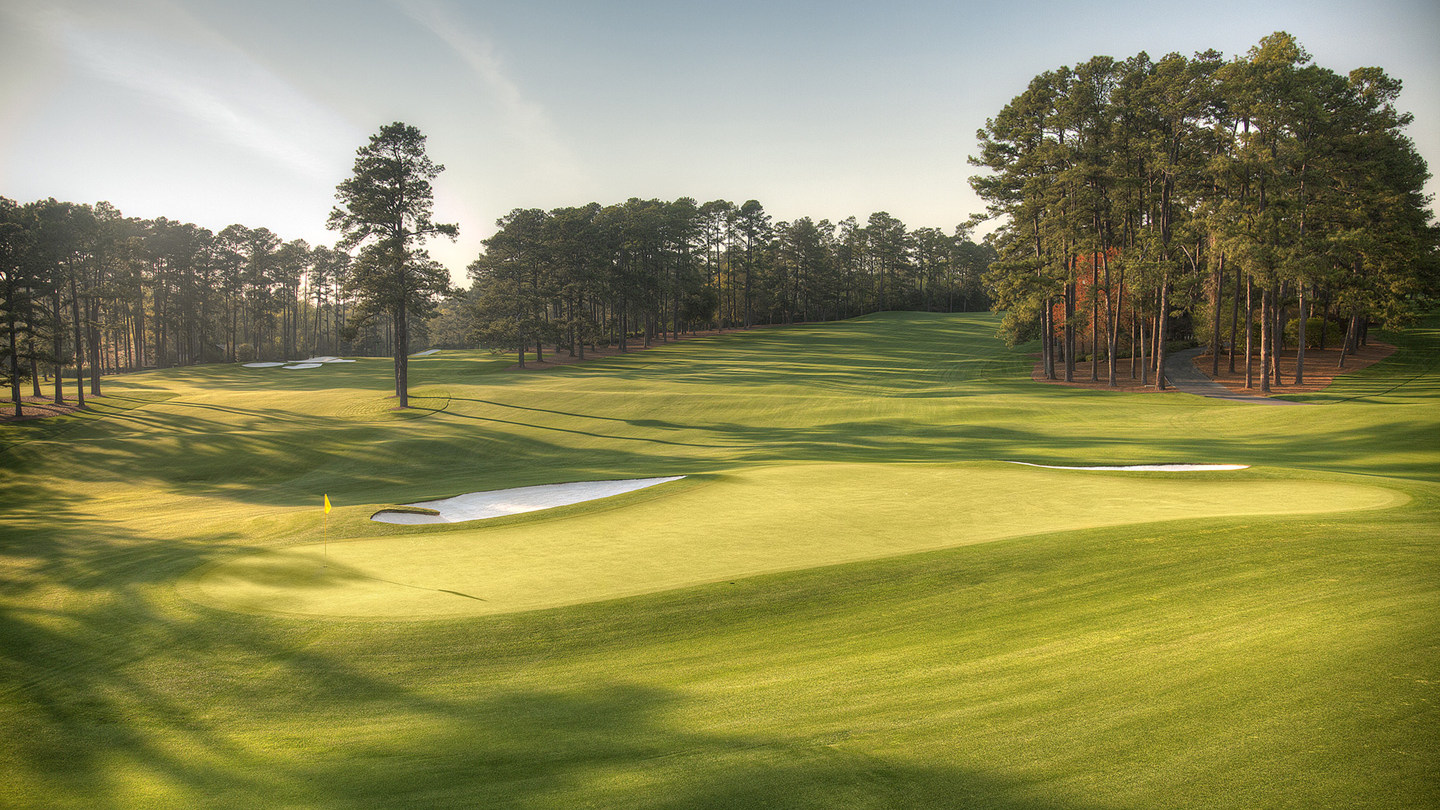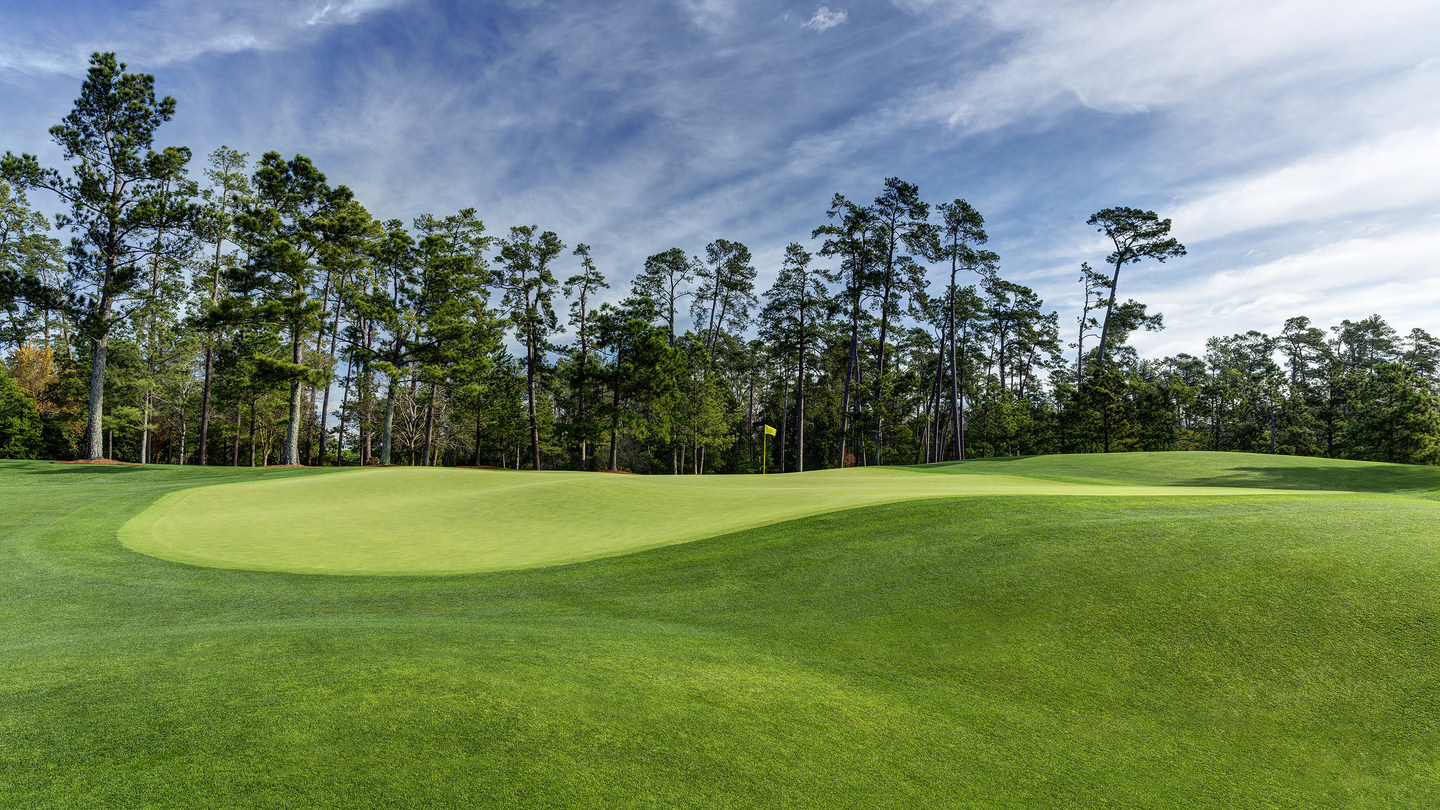Golf is a game of minimizing your misses, and nowhere is that more apparent than at Augusta National. There are plenty of opportunities to make birdies at the Masters venue, but big numbers lurk at every turn. The players of avoiding the places that produce lots of double and triple bogeys will give themselves the best shot at slipping into a green jacket on Sunday. Some of these danger zones, like Rae’s Creek short of No. 12 and the ponds on 15 and 16, are obvious, but others are more subtle. I call them Augusta National’s “No Zones.”
The wrong miss on No. 2
After a tough opening hole, the par-5 second offers a real chance at birdie or eagle. Most players have the firepower to go for it in two, but the winged green adds some intrigue to the approach. Ben Crenshaw recently told Golf.com that the biggest mistake a player can make on No. 2 is “not giving yourself leeway for your third shot or your pitch.”
When the pin is on the left side of the green, approaches have to be played right of the pin to leave the easiest putts. When the pin is on the right, approaches should err left. Missing left to left pins and missing right to right pins almost guarantees a player will have to loft the ball quickly over a bunker with little room to stop the ball. Playing safe on the chip and making par won’t kill a round, but it does waste one of the easier birdie opportunities on the course.

Looking at the layup area and green on No. 2. Courtesy of The Masters Tournament
Left of the green on No. 8
Par-5 scoring is of the utmost importance at Augusta National. Historically, No. 8 has the highest scoring average of the three-shotters, but six of the last eight champions made birdie on this hole during the final round on their way to victory. An almost sure-fire way to remove birdie from the equation is by pulling an approach left of the green. Guarded by mounding, trees, and pine straw, chip shots back onto the putting surface are incredibly difficult to get close.
Greg Norman missed right of the green during his final-round collapse in 1996, making par and losing a shot to Nick Faldo. A year later, Tiger pulled off an incredible recovery to make birdie (though, admitted, this shot must have been a bit easier with a nine-stroke lead).
Long right of the green on No. 11
With water left, dozens of shots end up right of the green on No. 11. No less a ball-striker than Ben Hogan once said, “If you see my ball on that green in two, you’ll know I missed my second shot.” But while many players may aim right and hope for an up-and-down, this strategy has to be executed with a degree of precision. The farther past pin-high the ball ends up, the more the player has to reckon with the back-to-front and right-to-left slope of the 11th green. With the pond lurking on the other side, the chip from the back-right corner is slippery and treacherous, especially to a back-left pin.
Short of the green on No. 14
It has become a cliché to say that the undulations at Augusta National are bigger in person than they are on television. But it’s 100% true, and the 14th green, which has the mother of all false fronts, proves as much. Any ball that doesn’t carry to the middle of the green risks rolling back some 20 yards, leaving a tricky chip back up the crown and little hope of getting up and down. A wind directly into the player’s face makes the slope even more quicker, dooming any mishit.

Short right of the green on No. 14. Courtesy of the Masters Tournament
Right of the green, especially to a right pin, on No. 16
The middle-left funnel pin on No. 16 is the famous Sunday position, but the other sections of this green are more strategically intriguing. In particular, the right side has a significant shelf that often hosts multiple pins during the tournament. Players have the option of hedging to the left of these pins and likely watching their ball feed down to the lower level, or aiming aggressively at the right edge to attempt to hold the narrow shelf. The problem is, balls that miss right face a short-sided chip with little room for error, and anything long ends up back on the lower level anyway.
Can players survive missing in these spots? Yes. But life is very stressful and rather difficult in the No Zones.
This piece originally appeared as part of Fried Egg Golf’s 2022 Masters coverage. Visit our site hub for more insight and analysis on Augusta National and the Masters.
More Masters coverage from The Fried Egg team:
Is Augusta National Turning Over a New Leaf?
Geoff Ogilvy’s notes on all 18 at Augusta National
Stories worth your time and tracking at the 2022 Masters
The Art Behind Augusta’s Roars: Focal points in Alister MacKenzie’s routings
Tiger’s Masters flirtation is something more than ceremonial


 by
by 
